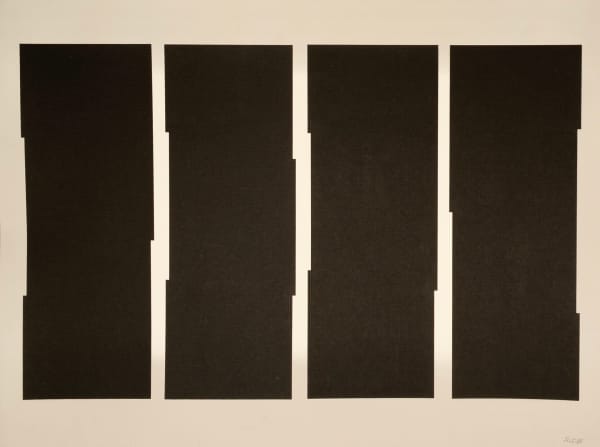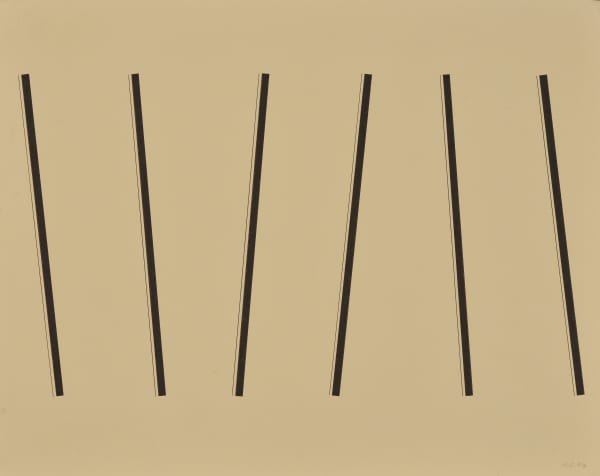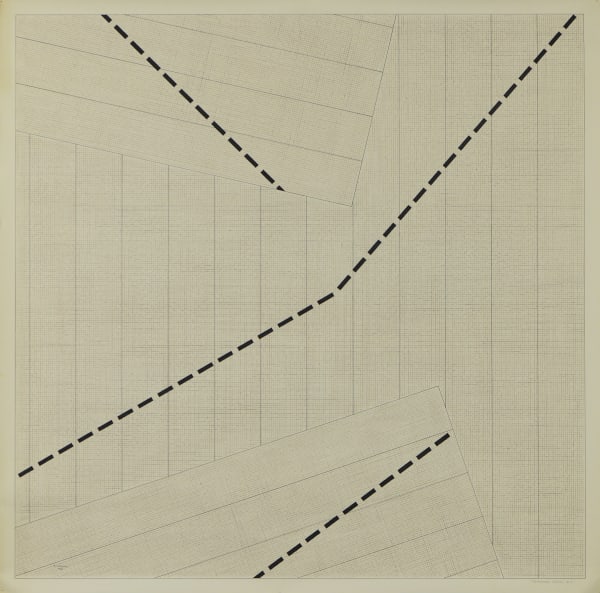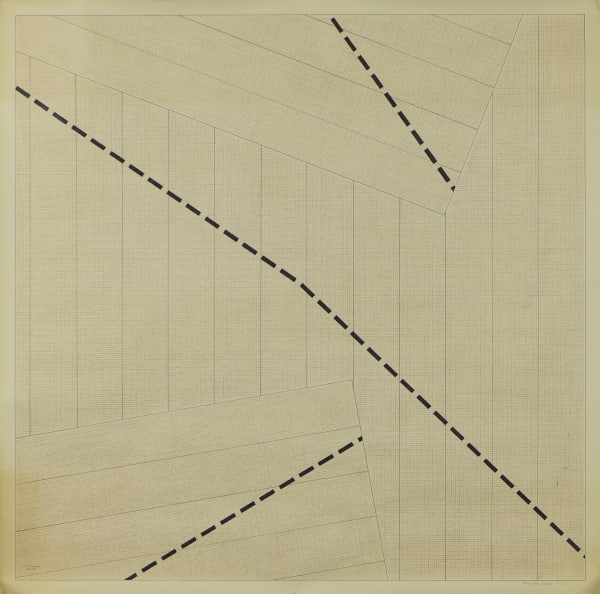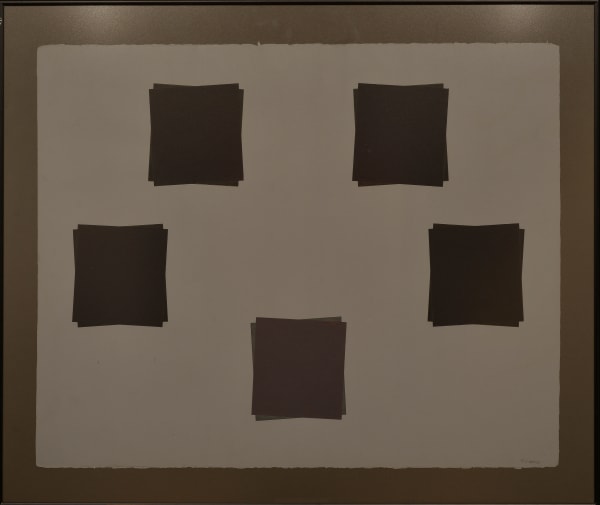Decentralized Games - Roman Cotoșman & Molnár Zoltán
The exhibition Decentralized Games brings together two essential artists who shaped the visual modernity of Timișoara in the 1960s: Roman Cotoșman and Molnár Zoltán .
BOOK YOUR VISIT WITH US
Decentralized Games | Roman Cotoșman & Molnár Zoltán
on display until 06.12.2025
Visit at Jecza Gallery Timișoara – Thurs–Sat, 11 AM–7 PM, with group guided tours every Sat. from 4PM.
If you would like to visit any other time or day, please contact
Jecza Gallery : jeczagallery.team[at]gmail[.]com, +40 766 066 201
Though distinct in medium and expression, their practices converge within a shared territory of systemic thinking and formal order, where geometric discipline becomes a means of exploring visual freedom. These themes defined not only their individual trajectories but also the broader artistic collective of Timișoara during the 1960s and 1970s, one of the most coherent and representative movements in postwar Romanian art.
Both artists took part in May 1968 in the exhibition held at Sala Kalinderu in Bucharest, which would go on to change the course of Romanian art history. Entitled “5 Young Artists from Timișoara”, it was the first event in Romania dedicated to abstract-constructivist art, featuring works by Roman Cotoșman, Molnár Zoltán, Ștefan Bertalan, Constantin Flondor, and Diet Sayler. Against the backdrop of the Prague Spring and Romania’s brief liberalization period, the exhibition introduced a radically new artistic language that rejected the constraints of socialist realism and affirmed the autonomy of form and visual thought.
Roman Cotoșman (1935–2006)
A founding member of Group 1+1+1 (1966–1969), alongside Ștefan Bertalan and Constantin Flondor, Roman Cotoșman is one of the defining figures of Romanian constructivist art. After a brief period of figurative and informal explorations, he turned toward a rigorous, geometric language in which composition became an autonomous, rational, and precisely articulated system. In 1969, together with Bertalan and Flondor, he represented Romania at the Constructivist Art Biennale in Nuremberg.
“Art is an infinite sensory and spiritual experience. A cognitive and free activity, a form of knowledge reached through the specific dimension of thought, applied to the artwork; something that brings together experience as a whole, intuition and conception, neither of which is yet total or complete.”
After 1970, Cotoșman emigrated — first to Germany, then to the United States, settling in Philadelphia. There, he continued his artistic practice in a minimalist spirit, through drawings, collages, and objects that reflected a lucid reflection on pure form. After 1989, his works were consistently reintroduced in major exhibitions in Romania, and in 1995 he represented the country at the Venice Biennale, in the Romanian Pavilion. His practice remains a bridge between Romanian constructivism and the international language of minimalism.
In 2024, Jecza Gallery presented works by Roman Cotoșman at Untitled Art Fair, Miami Beach, in a curatorial dialogue with Molnár Zoltán, Nana Mandl, and Norbert Ștefan, reaffirming the contemporary relevance of his constructivist vision.
Molnár Zoltán (1937–1999)
A graduate of the “Ioan Andreescu” Institute of Fine Arts in Cluj-Napoca, Molnár Zoltán was closely associated with the artists of the 111 and Sigma Groups, sharing their interest in art, science, and interdisciplinarity. After a period of teaching at the Faculty of Arts in Timișoara (1963–1972), he devoted himself to creation and scenography, collaborating with the Hungarian State Theatre and the Romanian National Opera in Timișoara.
Molnár Zoltán is recognized as a remarkable painter, known for his innovative exploration of the visual arts, seamlessly blending kinetic art and Op Art with profound spiritual themes. His practice transcends traditional visual experience, using vibrant colors and geometric forms to create compositions that resonate with musical harmony and structural precision.
The artist believed in the power of art to connect with the essence of existence, stating:
“I hear through the media of the signs the pulse of the universe, the eternal commencement of life.”
Molnár’s art is one of abstraction as an end in itself, an exploration of form, rhythm, and chromatic harmony in an almost musical balance. In his works, geometry meets harmony, and structure becomes a form of visual meditation.
In 2024, Jecza Gallery participated in Vienna Contemporary, presenting Molnár’s works in a visual dialogue with Anita Schmid. Later that year, at Untitled Art Fair, Miami Beach, the gallery exhibited his works alongside those of Roman Cotoșman, Norbert Ștefan, and Nana Mandl, with one of Molnár’s emblematic works joining a distinguished Los Angeles private collection.
___
The exhibition Decentralized Games thus functions as a symbolic reunion between two complementary visions of abstraction. For Roman Cotoșman, geometric construction became a form of rational meditation, a process through which order and structure transform into a quest for the spiritual. For Molnár Zoltán, the same formal discipline evolved into a pictorial language with musical resonance, where rhythm, color, and form coexist in an almost sonorous equilibrium.
The exhibition is made with the support of Banca Transilvania & Saint Gobain Romania.
Graphic design: Eugen Neluțescu
-
 Roman Cotoșman, Collage C11, 1974
Roman Cotoșman, Collage C11, 1974 -
 Roman Cotoșman, Decentralised Games NM18, 1982
Roman Cotoșman, Decentralised Games NM18, 1982 -
 Roman Cotoșman, Collage B12, 1975
Roman Cotoșman, Collage B12, 1975 -
 Roman Cotoșman, Collage PM9, 1991
Roman Cotoșman, Collage PM9, 1991 -
 Roman Cotoșman, Tensional Games B17, 1973
Roman Cotoșman, Tensional Games B17, 1973 -
 Roman Cotoșman, Tensional Games no.6, 1975-1976
Roman Cotoșman, Tensional Games no.6, 1975-1976 -
 Roman Cotoșman, Tensional Games Nr.6, 1975-1976
Roman Cotoșman, Tensional Games Nr.6, 1975-1976 -
 Roman Cotoșman, Untitled 80 H, 1986
Roman Cotoșman, Untitled 80 H, 1986 -
 Roman Cotoșman, Untitled 4, eighties
Roman Cotoșman, Untitled 4, eighties -
 Roman Cotoșman, Untitled, 1983-1986
Roman Cotoșman, Untitled, 1983-1986 -
 Molnár Zoltán, Crystal I, 1972-1973
Molnár Zoltán, Crystal I, 1972-1973 -
 Molnár Zoltán, Crystal II, 1972-1973
Molnár Zoltán, Crystal II, 1972-1973 -
 Molnár Zoltán, Flight I - Flight Apotheosis, 1976
Molnár Zoltán, Flight I - Flight Apotheosis, 1976 -
 Molnár Zoltán, Magic Force, 1974
Molnár Zoltán, Magic Force, 1974 -
 Molnár Zoltán, Spiritual Organ I, 1982-1984
Molnár Zoltán, Spiritual Organ I, 1982-1984 -
 Molnár Zoltán, Symmetric potentials, 1974
Molnár Zoltán, Symmetric potentials, 1974
-

Timișoara: deschiderea sezonului cultural de toamnă la Galeria Jecza – dialog vizual între doi artiști emblematici pentru modernitatea vizuală timișoreană a anilor 60, Roman Cotoșman și Molnar Zoltan
Buletin de Timisoara -

Galeria Jecza deschide o noua expozitie: un dialog intre Roman Cotosman si Molnár Zoltán, artisti emblematici pentru perioada anilor ’60.
Urban.ro




